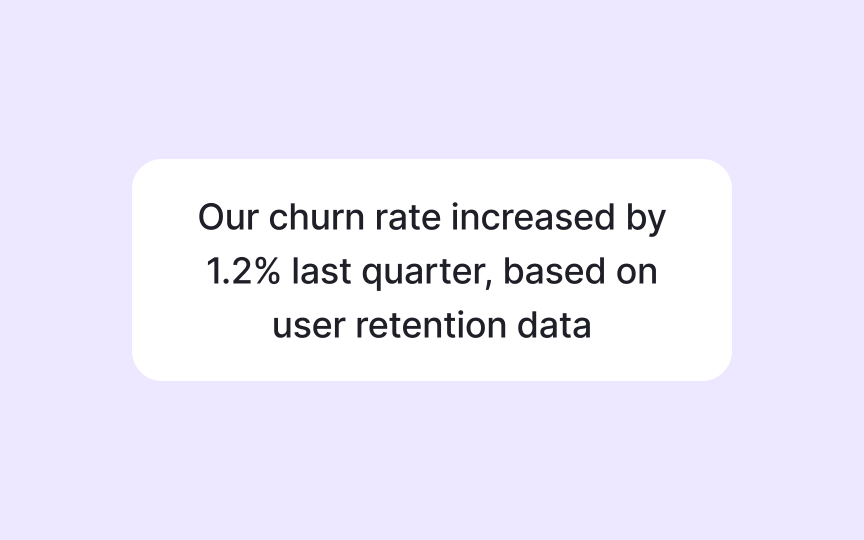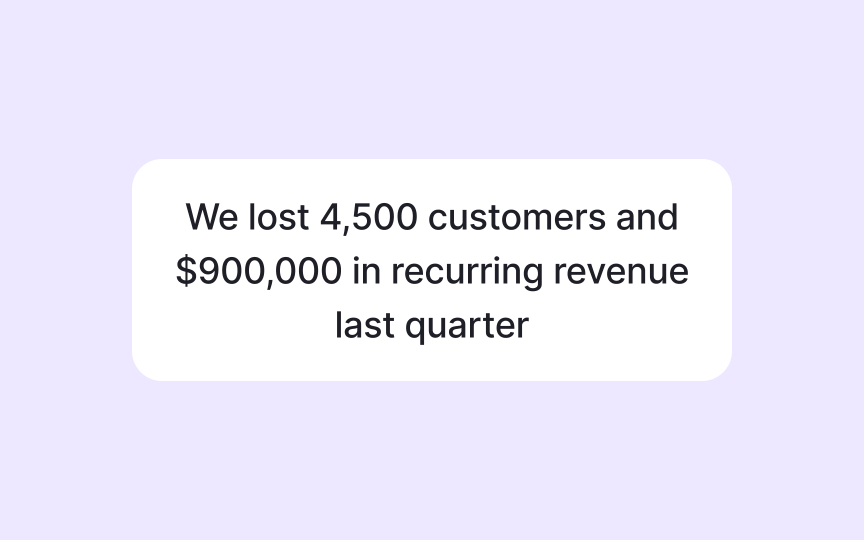Storytelling with data
Raw numbers rarely inspire action on their own. A conversion rate drop from 5.2% to 4.8% might not motivate change, but framing it as "We're losing 2,000 customers and $180,000 monthly" creates urgency.
Effective data storytelling requires 3 elements:
- Context establishes the baseline ("Our conversion rate has been stable at 5.2% for six months").
- Cause identifies potential reasons for changes ("The drop coincided with our checkout page redesign").
- Consequence makes the impact tangible ("At current rates, this represents 24,000 lost customers and over $2 million in reduced annual revenue").
The most compelling data stories connect metrics to human experiences and business outcomes. They help stakeholders visualize the implications behind the numbers, transforming abstract statistics into concrete scenarios that demand attention and inspire action.


